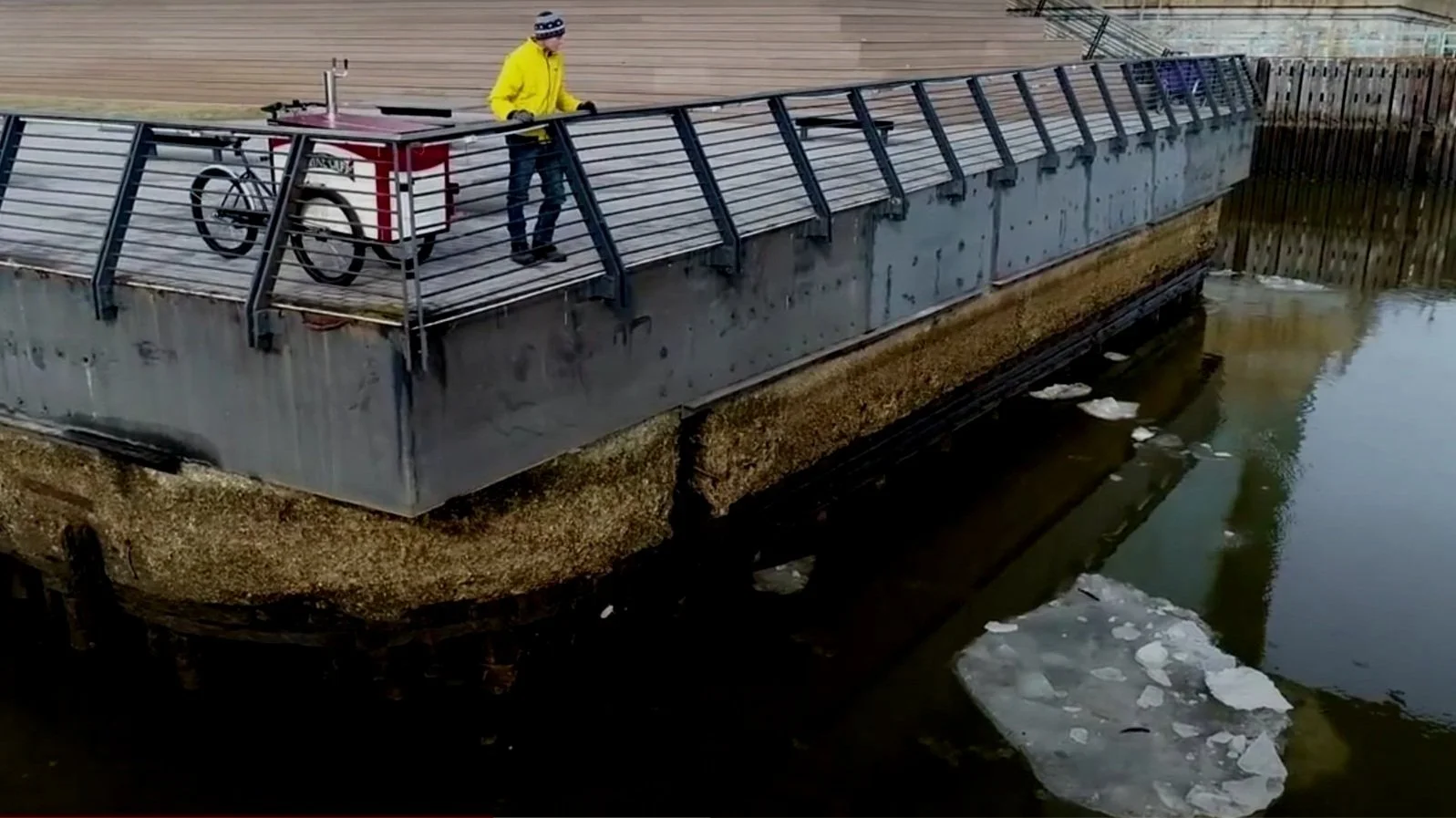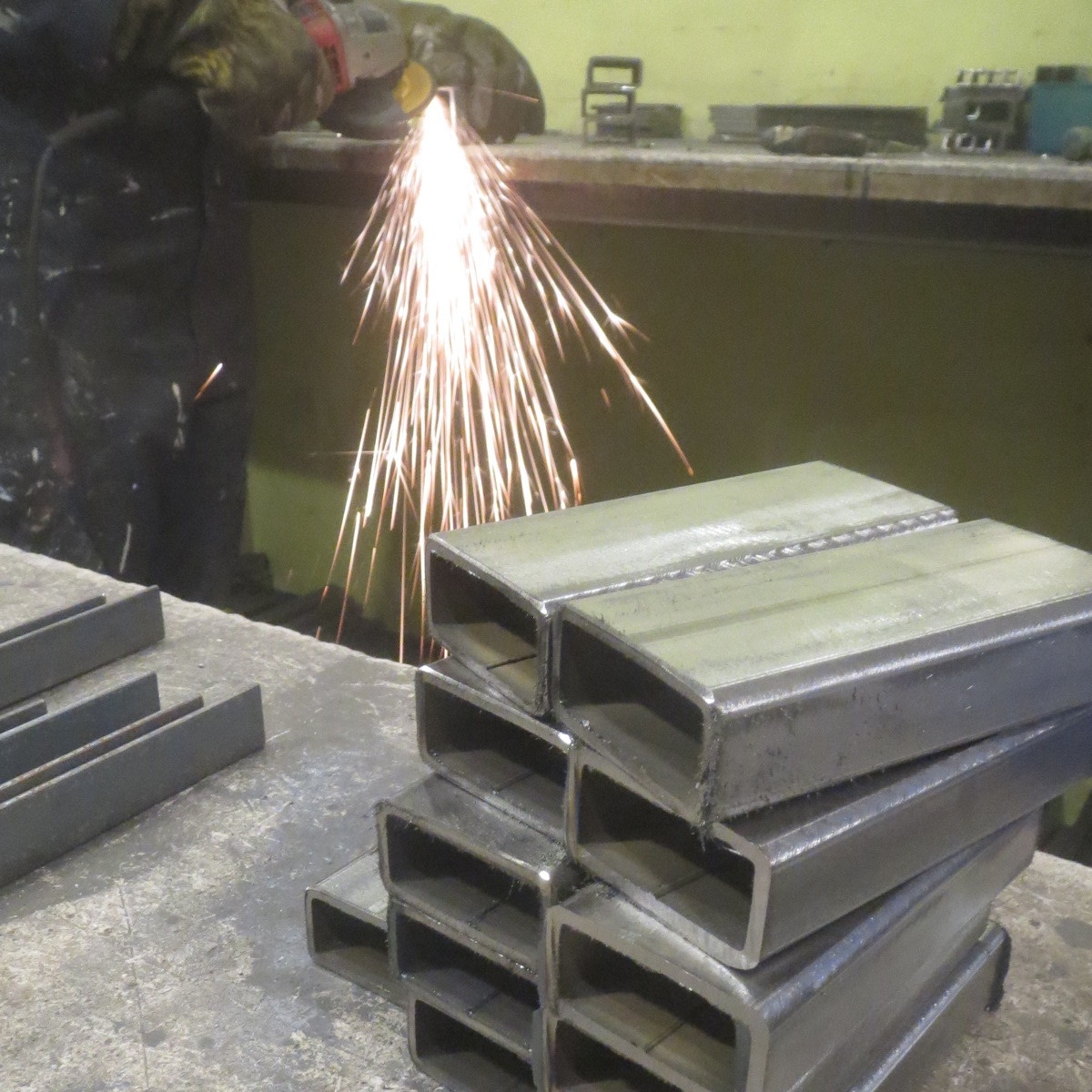Why a tricycle?
Tricycles are especially well suited for cargo transport in tough city conditions (at least in our opinion!) for a few reasons:
The inherent stability of three wheels allows you to get within a fraction of an inch of stuck traffic, going as slow as you want or as fast as you dare, and over trolley tracks, slippery surfaces, snow and ice, or any combination thereof.
Our trikes are designed for the sharpest turns possible in city streets; they turn sharper than a long two wheel cargo bike with an equivalent sized box, and much more accurately than a bike trailer.
Haleys, like all tricycles, don't need to be balanced or pushed hard at takeoff to stay up, so you can move a heavy load easier by starting slow and adding speed one pedal stroke at a time.
Tricycles aren't responsive to the rider's leaning like two-wheeled cargo systems, so cargo that weighs more than you won't push you around either. Wide, sideways loads (couches, for example) won't dip their edge to the ground and catch, but move and turn predictably. Cargo weight shifts are not nearly as noticeable.
Once inside a building or on a sidewalk, a tricycle is easy and safe to push while walking besides, so you can get where you're going without awkwardness, or breaking rules.
You can relax when stopped, not using energy to keep your cargo upright at a red light, and there's no kickstand to lift your new refrigerator up onto when you're home, just a parking brake.
Why two front wheels?
Tadpole trikes (two front wheels) are simpler and easier to maintain than delta (two rear wheel trikes). There's no special running gear, they're basically regular bikes from the pedals back.
You can keep an eye on your cargo better.
It's easier to see if you'll fit between two obstacles without looking behind you while moving forward.
Front load trikes are more likely to be seen as work vehicles of some type, from their long history as work and ice cream trikes.
Our inspiration: French triporteurs, ca. 1910
A tricycle frame being cleaned after welding.
How does it turn? Is it easy to steer?
Haleys turn by rotating the whole cargo box around a pivot in the center of the front wheels. The rider controls the direction by turning the cargo where she wants to go and following behind. The box will rotate easily no matter how much weight is being moved.
Haleys, like almost all tricycles (and unlike bicycles), don't lean when you turn, and don't turn when you lean. Most people haven't pedaled a tricycle since they were children, but it only takes a few minutes for most people to remember how to ride one. Generally speaking, serious cyclists need a little more practice, but it becomes second nature very quickly. Haleys are designed for the sharpest turns possible, and absolutely no side steer while pedaling. This lets you track perfectly straight, right up against an obstacle, and then confidently steer around another. In return, Haleys very unapologetically steer like tricycles.
Painted frames dry and ready for assembly.
Is the trike stable at high speeds?
Yes, Haley Trikes are very stable. The center pivot and subtle angles of the trike’s frame keep speed wobble from happening whatsoever. The tricycle will not shake no matter how fast you go. As with any vehicle with any number of wheels, you must slow down for sharp turns.
Is it easy to assemble?
The tricycle is shipped in two parts, easily bolted together with common tools. Anyone with some bicycle work experience or is just generally handy can assemble their tricycle themselves. No special tools are required to do any work on a Haley Tricycle.
We use our ca. 1906 building’s pulley hook for moving materials and tricycles up and down.
How do people respond to a Haley Trike on the street?
You get compliments, even from taxi drivers. Seriously.
A lot of products are promoted as making everyone around them smile. Almost always, this is an exaggeration, but that's not the case with a Haley Trike. After a while, your trike will be a normal, everyday way to move your stuff around. The smiles and comments from everyone else won't stop, though, and until cargo trikes once again become common in the US, you'll have to get used to living in a real-life TV commercial. It's fun most of the time, but sometimes you just want to move a table saw across town, and not have a conversation about it.
The attention has great benefits, though. Drivers are much kinder to cargo trikes, and will let you roll across their path more often and give you more space when they pass. People come up with the same jokes and ideas, but they're almost always positive, even if they're not funny anymore. And once in a while, an older person will tell you about the cargo trikes that used to be in their neighborhood, or the adventures that they had with theirs.
Panels on the drying rack.
How do they handle on ice and snow?
Riding on slick winter streets is fun on a Haley when it's impossible on a bicycle. On packed city snow and slush, or even pure ice, a Haley is absolutely the best. You can ride with confidence knowing the tricycle won't slide out from under you. Steering is not effected at all; a loaded Haley will steer just as accurately between cars, with just fractions of an inch to spare, on slippery, wet ice as well as it does on hot summer streets. You obviously need more distance to stop.
If the streets are snowy but driven on already, you can usually fit one front wheel and the rear into one smooth, pressed-snow car track. This leaves just one front wheel to plow through the fluffier snow outside the track; again, steering is hardly effected.
If the streets are covered in fresh snow, rolling resistance is higher than a bicycle as all three wheels make their own track. Several inches of fluffy snow is fun, but a cross country skiing kind of fun. In some sections of a city block you might have to get off and push the trike through. In urban areas, though, snow doesn't stay fluffy and clean for long, and the uglier the conditions get, the better for tricycles.
Also, during a major winter storm, any driver seeing you on a cargo trike thinks you're either crazy or fantastic, and lets you ride straight down the middle of the street at a slow pace, and wait patiently until they can pass.
Grinding parts.
Is the box removable? Can a Haley be made as a flatbed? Can I build my own box?
No, no, and not usually! The box is fixed to the frame, which is essentially a welded steel cube for maximum strength. Panels attached to the frame simply to keep your stuff from falling out. Because we use large 26" front wheels, a flatbed would be more limiting than simply carrying furniture or other large items over the wheels. We have made empty cube 'ghost frame' trikes for special uses, but we like to think the box is the best part of a Haley!







